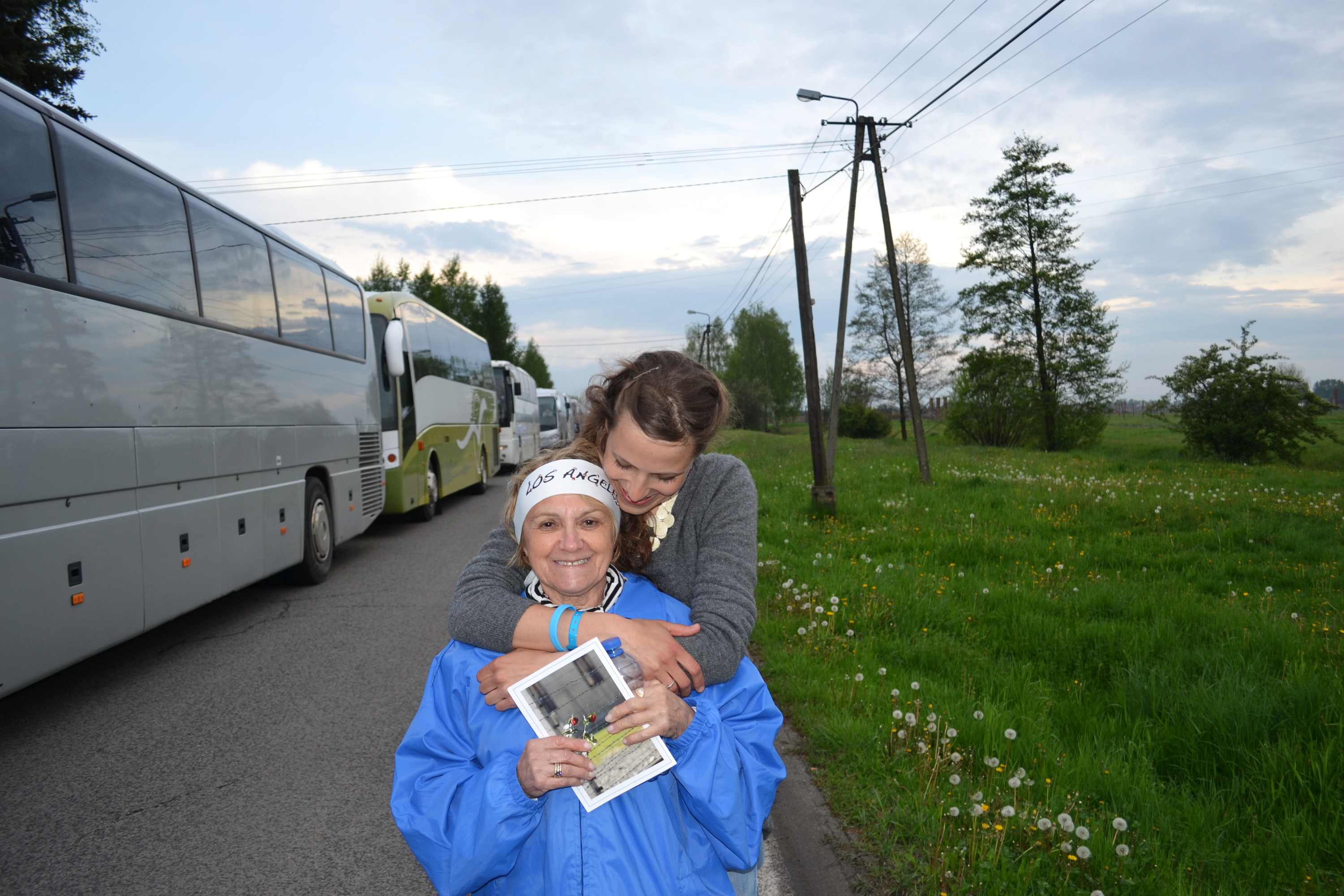March of the Living Unites Friends
I look at the picture and realize this is why I’m working at the USC Shoah Foundation. This is what it’s all about. The photo shows two women standing in a field of green grass dotted with dandelions. The younger of the two has her arm wrapped around the other. The older woman smiles at the camera, while the other’s attention is focused only on her friend. The bond between them comes through; the love they share is unmistakable.
Although it looks like a snapshot taken on a happy family vacation, the two women are actually at the Auschwitz death camp. And instead of being family members, they only met for the first time a few hours earlier.
 Olga Burkhardt and Paula Lebovics meeting at March of the Living.
Olga Burkhardt and Paula Lebovics meeting at March of the Living. I’ve written about them in a previous blog post. One night while watching testimony from her home in Germany, Olga Burkhardt came across a story that held special meaning for her. Watching Paula Lebovics talk about spending her childhood in Auschwitz during the Holocaust resonated with Olga -- she has a daughter who is the same age Paula was when her own ordeal began.
Feeling a need to thank her for sharing her story – and to promise that her own daughter would be raised in a home free of prejudice and intolerance – Olga reached out to the USC Shoah Foundation to see if she could contact Paula.
The request landed in my inbox, and within a few weeks, Olga and Paula were trading emails and talking on Skype. And then something remarkable happened: Not only did they decide to meet in person, they would do it at Auschwitz during the March of the Living, an annual event that brings people from around the world to visit the death camp to both honor the dead and celebrate life.
Olga told me the two quickly became inseparable and spent virtually every minute together. She described it as a “wonderousness that enveloped us those past days spent together.”
Paula, who has long been an advocate for Holocaust survivors and talked at the event about her childhood experiences, said she feels validated when she talks to people like Olga.
It’s a good reminder that testimonies are more than historic artifacts. They are real people speaking across generations that touch and connect others in meaningful and unexpected ways.
Like this article? Get our e-newsletter.
Be the first to learn about new articles and personal stories like the one you've just read.